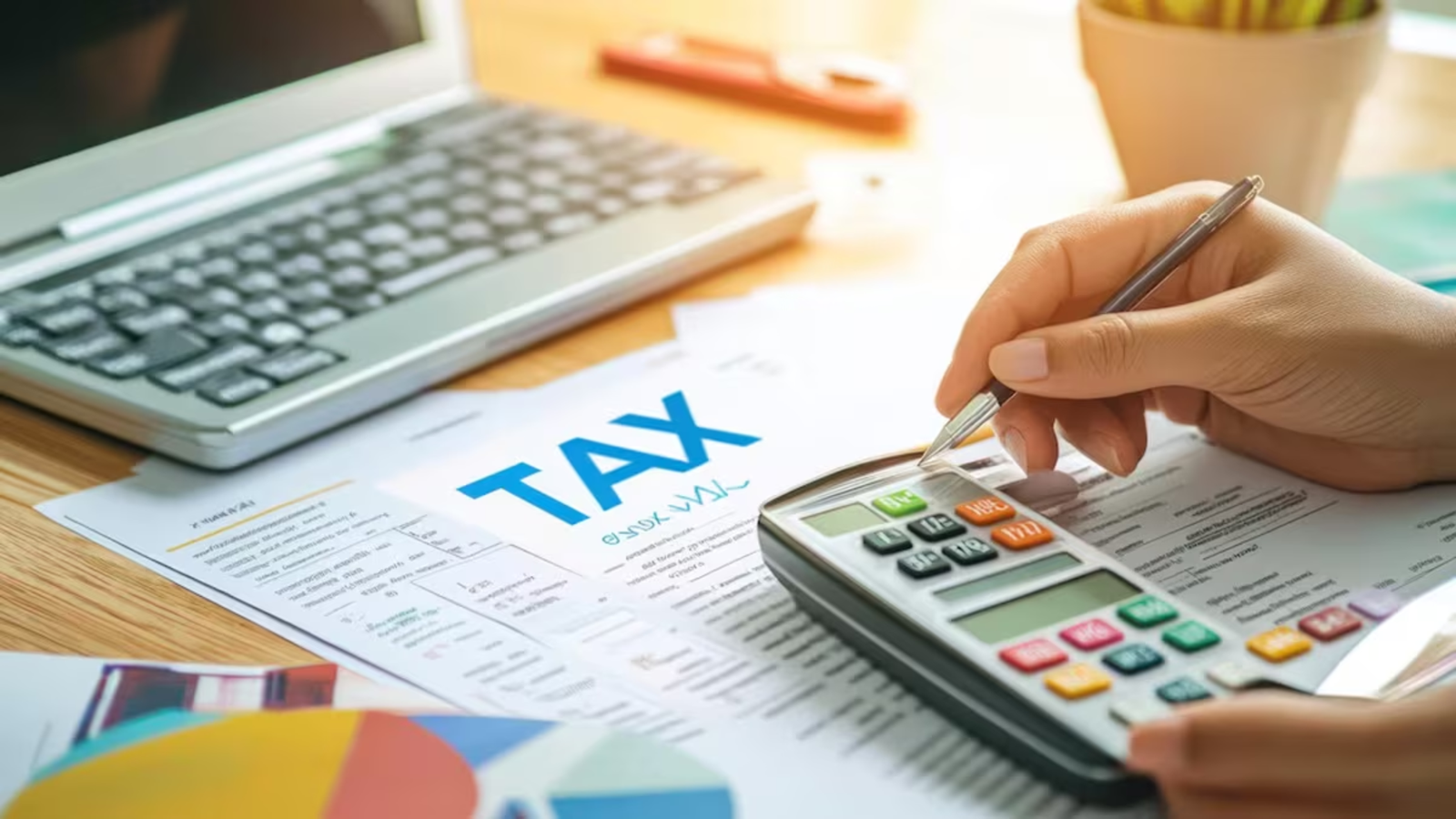
Navigating the Indian income tax landscape can feel like traversing a complex maze. With two distinct tax regimes vying for your attention, the decision of which one to choose for a 10 lakh income can be particularly challenging. This article aims to demystify the process, providing a comprehensive analysis to help you make an informed choice. We’ll delve into the intricacies of both the old and new tax regimes, examining their advantages and disadvantages, and ultimately guiding you towards the optimal option for your specific financial situation.
Table of Contents
Understanding the Two Regimes: A Quick Overview
Before diving into the specifics of a 10 lakh income, let’s briefly recap the two tax regimes:
- Old Tax Regime: This regime offers a plethora of deductions and exemptions under various sections of the Income Tax Act. It allows you to reduce your taxable income by investing in specific instruments, paying premiums for insurance, and claiming deductions for expenses like house rent allowance (HRA), leave travel allowance (LTA), and more. This regime is generally favored by those who maximize these deductions and exemptions.
- New Tax Regime: Introduced as a simplified alternative, this regime offers lower tax rates but eliminates most deductions and exemptions. It aims to provide a straightforward approach to taxation, appealing to those who prefer simplicity and lower tax outgo without the hassle of managing investments for tax-saving purposes.
Analyzing the Impact on a 10 Lakh Income
Now, let’s focus on the critical question: which regime is better for a 10 lakh income? The answer, as with most financial decisions, isn’t a simple yes or no. It depends heavily on your individual circumstances, particularly your investment habits and the deductions you typically claim.
Old Tax Regime: The Deduction Game
Under the old regime, your taxable income can be significantly reduced by utilizing various deductions. Let’s illustrate with an example:
- Gross Income: 10,00,000
- Standard Deduction: 50,000 (This is available to salaried individuals)
- Deductions under Section 80C: Up to 1,50,000 (Investments in PPF, EPF, life insurance premiums, etc.)
- Deduction for NPS (Section 80CCD(1B)): Up to 50,000
- Deduction for Health Insurance (Section 80D): Up to 25,000 (For self, spouse, and children)
- Home Loan Interest Deduction: Up to 2,00,000 (If applicable)
- HRA: (This varies depending on your rent and salary)
Let’s assume, for this example, that you maximize your 80C deductions, contribute to NPS, have health insurance, and pay a significant home loan interest. Let’s also assume an HRA component that brings your total deductions to, say, 4,00,000 (a reasonable assumption for many).
- Taxable Income (Old Regime): 10,00,000 – 4,00,000 = 6,00,000
Now, let’s apply the income tax slabs for the old regime:
| Income Slab (₹) | Tax Rate |
|---|---|
| Up to 2,50,000 | 0% |
| 2,50,001 to 5,00,000 | 5% |
| 5,00,001 to 10,00,000 | 20% |
| Above 10,00,000 | 30% |
Export to Sheets
- Income Tax (Old Regime – Example): (2,50,000 * 0%) + (2,50,000 * 5%) + (1,00,000 * 20%) = 12,500 + 20,000 = 32,500
New Tax Regime: Simplicity and Lower Rates
The new tax regime offers lower tax rates but forgoes the benefit of deductions. For a 10 lakh income, the tax calculation is as follows:
| Income Slab (₹) | Tax Rate |
|---|---|
| Up to 3,00,000 | 0% |
| 3,00,001 to 6,00,000 | 5% |
| 6,00,001 to 9,00,000 | 10% |
| 9,00,001 to 12,00,000 | 15% |
| 12,00,001 to 15,00,000 | 20% |
| Above 15,00,000 | 30% |
Export to Sheets
- Income Tax (New Regime): (3,00,000 * 0%) + (3,00,000 * 5%) + (3,00,000 * 10%) + (1,00,000 * 15%) = 15,000 + 30,000 + 15,000 = 60,000
The Verdict: Which is Better?
In the example we considered, the old tax regime results in a significantly lower tax outgo (32,500) compared to the new tax regime (60,000). However, this is highly dependent on the individual’s ability to utilize deductions and exemptions effectively.
Factors to Consider:
- Investment Habits: If you are a disciplined investor who regularly invests in tax-saving instruments like PPF, ELSS, and life insurance, the old regime is likely to be more beneficial. The deductions under Section 80C, 80D, and others can significantly reduce your taxable income.
- Home Loan: If you have a home loan with substantial interest payments, the old regime’s deduction for home loan interest can be a major advantage.
- HRA and Other Allowances: If your salary includes significant components of HRA, LTA, and other allowances that are exempt under the old regime, it can further tilt the balance in its favor.
- Financial Goals: Consider your long-term financial goals. If you are saving for retirement, children’s education, or a down payment for a house, utilizing tax-saving investments under the old regime can help you achieve these goals faster.
- Risk Appetite: Some tax-saving investments, like ELSS, come with market risks. Assess your risk appetite before investing in such instruments.
- Administrative Hassle: The new tax regime offers simplicity and reduces the burden of maintaining investment proofs and documentation. If you prefer a hassle-free approach to taxation, the new regime might be more appealing.
Data and Insights:
While specific data on the percentage of taxpayers opting for each regime isn’t readily available, anecdotal evidence suggests that a significant portion of taxpayers still prefer the old regime, particularly those with higher incomes and substantial investments. This is also supported by the fact that the government has not aggressively promoted the new regime, indicating that it hasn’t yet become the dominant choice.
Making the Decision: A Step-by-Step Guide
- Calculate your Gross Income: Determine your total income from all sources.
- Estimate Deductions under Old Regime: Estimate the deductions you can claim under the old regime based on your investments, expenses, and eligible allowances. Be realistic in your estimations.
- Calculate Taxable Income under Old Regime: Subtract the estimated deductions from your gross income.
- Calculate Income Tax under Old Regime: Apply the income tax slabs to your taxable income to determine your tax liability.
- Calculate Income Tax under New Regime: Apply the income tax slabs for the new regime to your gross income (as there are no deductions).
- Compare the Tax Outgo: Compare the tax liability under both regimes.
- Factor in Other Benefits: Consider non-monetary factors like simplicity and convenience.
- Make an Informed Decision: Choose the regime that aligns best with your financial situation and preferences.
FAQs
Q: Can I switch between the old and new tax regimes every year?
A: Yes, you can switch between the two regimes every year, provided you are not a business income earner. However, if you have business income, you can switch only once and have to stick to the chosen regime thereafter.
Q: What is the standard deduction, and who can claim it?
A: The standard deduction is a flat deduction of ₹75,000 available to salaried individuals and pensioners. It reduces your gross salary income before calculating income tax.
Q: Are there any other deductions I should consider besides those mentioned in the article?
A: Yes, there are other deductions like those for education loan interest (Section 80E), donations to certain charities (Section 80G), and medical expenses for senior citizens (Section 80D). However, their applicability depends on individual circumstances.
Q: How do I decide which regime is best if my income is slightly above or below 10 lakhs?
A: The principles remain the same. Calculate your tax liability under both regimes, factoring in your actual deductions. Even a small difference in income can sometimes significantly impact the optimal choice. Use an online tax calculator to make this process easier.
Q: What if I am self-employed or have business income?
A: The choice of tax regime is still applicable. However, as mentioned earlier, switching back and forth between regimes becomes restricted for business income earners. Also, some deductions applicable to salaried individuals may not be available.
Q: I pay a significant amount in rent but don’t receive HRA. Can I still claim a deduction for rent paid?
A: Yes, you can claim a deduction for rent paid under Section 80GG if you don’t receive HRA. However, there are certain conditions and limits on the amount you can claim.
Q: Can I claim a deduction for the interest I pay on my home loan for a second property?
A: Yes, you can claim a deduction for the interest paid on a home loan for a second property. However, there are certain rules regarding how the rental income from the second property is treated for tax purposes.
Q: I have taken a loan for my higher studies. Can I claim a deduction for the interest paid on it?
A: Yes, you can claim a deduction for the interest paid on an education loan under Section 80E. This deduction is available for loans taken for yourself, your spouse, children, or a student for whom you are the legal guardian.
Q: What are the different investment options available under Section 80C?
A: Section 80C covers a wide range of investments, including PPF, EPF, life insurance premiums, ELSS, NSC, tax-saving fixed deposits, and principal repayment of a home loan.
Q: Are there any deductions available in the new regime?
A: While most deductions are unavailable, the standard deduction of ₹75,000 is available for salaried individuals and pensioners in the new regime.
Conclusion
Choosing the right tax regime is a crucial financial decision. For a 10 lakh income, the decision hinges largely on your ability to utilize deductions effectively. While the old regime often proves more beneficial for those maximizing deductions, the new regime offers simplicity and lower rates for those who prefer a straightforward approach. By carefully analyzing your financial situation, investment habits, and long-term goals, you can make an informed decision and optimize your tax outgo. Don’t hesitate to consult with a financial advisor for personalized guidance.
Discover more from ExamQuestIndia: The Best Exam Prep Platform in India
Subscribe to get the latest posts sent to your email.







